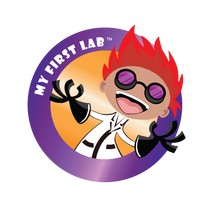
The Science Of Snow
The Science Of Snow
The Science of Snow
Happy Snow Day, fellow mad scientists! Whether you have the day off and you’re sitting at home sipping on hot cocoa, or you had to trudge through the snow and traffic to get to work or school, it’s hard to deny the beauty of a good snowfall! What could be prettier than the peaceful settling of a gentle snowfall?
Snow is not only pretty to look at, but also cool! In case you’re wondering how snow is made or what it does when it falls, fear not. We’ve been up since before dawn, collecting snowflakes, analyzing them and coming up with some amazing facts to quench your curiosity. Without further ado, here is our science of snow!
What is a snowflake?
The first thing you need to know is that a snowflake is an accumulation of snow crystals that forms when the atmospheric temperature is at or below freezing. (32 degrees Fahrenheit, or 0 degrees Celsius) These snowflakes, which would normally be rain if it was warm enough, then fall to the ground and stay frozen if the ground temperature is at or below freezing.
Snowflakes come in many shapes and sizes. Check out these snowflake pictures to see all the different snowflake shapes. Try to see if you can identify any the next time you see a snowfall!
Snowflake Shapes
There are a variety of different snowflake shapes one can witness and review with our microscopes. There are many types of snowflakes, including simple prisms, stellar plates, sectored plates, stellar dendrites, fernlike stellar dendrites, hollow columns, needles, capped columns, double plates, split plates, triangular crystals and occasionally 12-sided snowflakes. More rare snowflake shapes include bullet rosettes, radiating dendrites, rimed crystals and irregular crystals.
Sectored Plates
Stellar Plates
Snowfall
Snow can still reach the ground as snowflakes even when the ground temperature is above freezing, but only if it’s below 41 degrees Fahrenheit (5 degrees Celsius). As the snowflakes enter the warmer ground temperature, they begin to melt. This melting causes the air immediately around it to cool, which slows the melting process, and allows the flake to stay frozen.
Ground Snow
As for what happens to the snow after it reaches the ground – that depends on the conditions. If there’s a heavy wind while it snows, the snowflakes can get broken into fragments, which allows them to become more densely packed. The size, shape and texture of snowflakes can change over time, even if the ground temperature stays freezing. However, they can also melt and refreeze as the temperature fluctuates, which changes the snow to slush or ice. If more snow falls later, this can further impact the snow as well.
Frozen Factoids
- Snowflakes usually reach a size of about 0.5 inches in diameter.
- Under the right conditions (I.e., light wind or freezing temperatures) snowflakes can get as big as 2 inches across!
- While it can be too warm to snow, it can never be too cold.
- Snow requires moisture, so even the coldest areas of the world that are dry rarely get snow.
- Snow reflects high levels of ultraviolet (UV) light and can cause snow blindness or photokeratitis. If you are dealing with an entirely frozen landscape, be sure to put on those safety goggles or sunglasses!
- The highest snowfall ever recorded in a one-year period was 1,224 inches on Mount Rainier, Washington in 1971.
Whether you want to use one of the microscopes we sell at My First Lab to investigate a snowflake or use one of our digital displays to teach your students about snowflakes, we have just what you’re looking for. Check out our products at My First Lab.
That’s your up-to-the-minute snow weather report! Until next time, mad scientists!
My First Lab has been a leader in developing STEM equipment for the past 30 years. With products ranging from microscopes and bundles to prepared slides and accessories, we are sure to have any product that a junior investigator, hobbyist or educational leader could need. Learn how to create hands-on experiments by browsing our blog or checking out our award-winning products.


